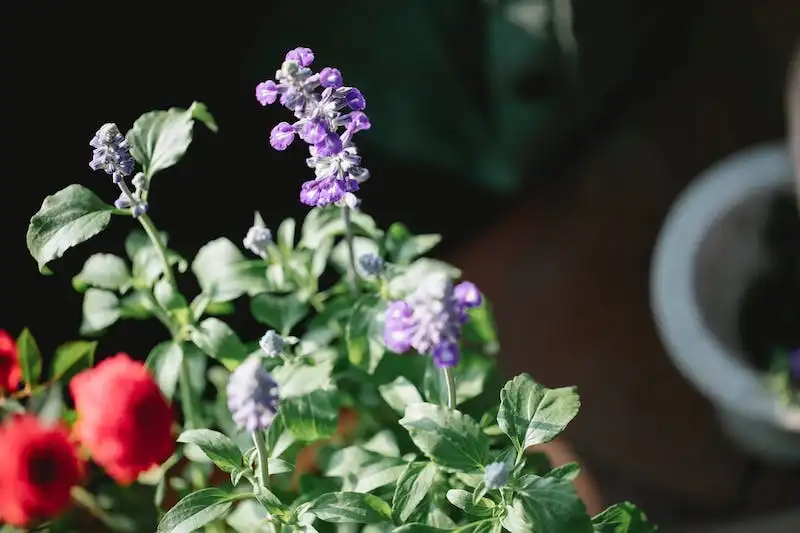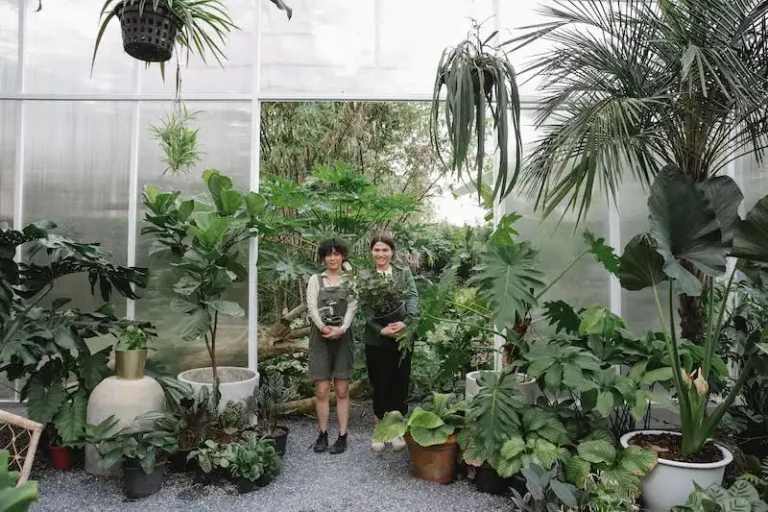Nepenthes, also known as Tropical Pitcher Plants, are a fascinating type of plant that have physical characteristics and methods of prey capture that make them truly unique. These plants are native to tropical regions of Southeast Asia, specifically the Philippines, Borneo, and Sumatra. They can also be found in parts of India, Madagascar, and New Guinea. Nepenthes species grow in a variety of habitats, from warm lowlands to cool highlands. They are often found in areas with high humidity and ample rainfall.
One of the most distinctive features of Nepenthes plants is their pitcher-shaped leaves. These modified leaves are typically filled with liquid and act as traps to catch insects and other invertebrates. The pitchers are formed through a combination of leaf growth and modifications, creating a unique structure that allows the plant to attract and capture prey. Some Nepenthes pitchers are small and compact, while others can be quite large and showy. The coloration and markings on the pitchers vary between species, but they all serve the same purpose – to entice insects to enter and be unable to escape.
While many pitcher plants rely on scent to attract prey, Nepenthes plants often have physical adaptations to aid in their capture. For example, some species have slippery surfaces or downward-pointing hairs inside the pitcher, making it difficult for insects to climb out once they have fallen inside. Some Nepenthes species have nectar glands located near the entrance of the pitcher, luring insects in with the promise of a sweet treat. Once inside, the insects are unable to escape and are eventually digested by the plant’s enzymes.
Nepenthes plants are known for their ability to adapt to a variety of growing conditions. They can be found growing on trees, on the ground in litter or moss, or even as climbing vines. While some species prefer bright, indirect light, others can tolerate lower light levels. They also have distinct preferences for temperature and humidity, with some species thriving in highland regions with cooler temperatures, while others prefer lowland areas with warm temperatures.
For those interested in cultivating Nepenthes plants, there are several tips to consider. These plants require a high humidity environment, so misting the leaves or placing them near a humidifier can help mimic their natural habitat. It’s also important to provide them with a well-draining growing medium, such as a mixture of sphagnum moss and perlite. Nepenthes plants prefer to be watered with rainwater or distilled water, as tap water can contain minerals and chemicals that may be harmful to them.
In conclusion, Nepenthes, or Tropical Pitcher Plants, are a fascinating group of plants with unique characteristics and methods of prey capture. Their pitcher-shaped leaves, filled with liquid, act as traps for insects and other invertebrates. These plants have adapted to a variety of growing conditions and can be found in tropical regions around the world. Cultivating Nepenthes requires attention to their specific needs for humidity, temperature, and water quality. Whether you’re a plant enthusiast or simply intrigued by the wonders of nature, Nepenthes plants are sure to captivate and amaze.
Growing Tips for Nepenthes
When it comes to growing Nepenthes, there are a few important factors to consider. These tropical pitcher plants are native to the Philippines and other regions in Southeast Asia, and they have unique characteristics that set them apart from other plants.
Habitat and Growing Conditions
- Nepenthes are typically found in highland and lowland habitats, with some species growing in mountains or on cliffs.
- They are climbing plants that grow on trees or rocks.
- Nepenthes prefer a warm and humid climate, so it’s important to recreate these conditions if you’re growing them in a different region.
- During the day, the temperature should range from 70°F to 85°F (21°C to 29°C), while at night it should be around 60°F to 70°F (15°C to 21°C).
- They need a lot of bright, indirect light to thrive, so place them near a window where they can receive plenty of light but not direct sunlight.
- Grow your Nepenthes in a well-draining soil mix made of sphagnum moss, perlite, and orchid bark.
Watering and Feeding
- Make sure to keep the soil moist at all times, but be careful not to overwater as this can lead to root rot.
- Water your plants with distilled or rainwater to prevent the buildup of minerals in the soil.
- During the growing season, which is typically from spring to fall, water your Nepenthes regularly to keep the pitchers filled with water.
- Never let the pitchers dry out completely, as they rely on the liquid inside to catch and digest prey.
- In addition to catching insects, Nepenthes also need nutrients from their roots, so consider feeding them with insects, fish food, or a specialized carnivorous plant fertilizer.
Winter Care
- If you live in a region with cold winters, it’s important to provide your Nepenthes with the right conditions during this time.
- Move your plant to a warmer location, such as a heated greenhouse or a bright indoor area.
- Reduce watering during the winter months, as Nepenthes go through a period of dormancy and don’t require as much moisture.
- Keep the humidity levels high to mimic their natural habitat.
- Consider using a humidity tray or a humidifier to maintain the right humidity levels.
Attracting Prey
- To help the pitchers catch prey, you can use different methods to attract insects.
- One common method is placing a small amount of honey or sugar water near the pitcher opening.
- Another way is to hang sticky traps or use mosquito netting around the plant to capture flying insects.
- Some Nepenthes species have a sweet scent that attracts insects naturally.
- Keep in mind that Nepenthes are adapted to catch and digest invertebrates, so feeding them with conventional plant food is not recommended.
By following these growing tips, you can successfully cultivate Nepenthes and enjoy their fascinating history and unique characteristics.
Tropical Pitcher Plants Nepenthes
Tropical Pitcher Plants, also known as Nepenthes, are a group of fascinating plants that have adapted to a unique way of obtaining nutrients. These plants typically grow in warm habitats, such as the Philippines and parts of Southeast Asia. The plants have large, pitcher-like leaves that serve as traps for insects and other small invertebrates.
The pitchers of Nepenthes are filled with a liquid that contains enzymes to digest the captured prey. The insects are attracted to the pitchers by a combination of visual cues and smells produced by the plant. Once inside the pitchers, the prey often find it difficult to escape due to physical characteristics of the leaf, such as slippery walls or downward-pointing hairs.
Nepenthes have a long history of cultivation and hybridization. The plants are popular among plant enthusiasts and collectors due to their interesting form and ability to catch prey. Some Nepenthes hybrids can grow to impressive sizes, with pitchers spanning several inches in length.
In their natural habitat, Nepenthes are typically found in environments with high humidity and a ready supply of nutrients. The plants often grow as climbing vines, using tendrils to attach themselves to trees and other structures. They can be found in a range of habitats, from lowland forests to mountainous regions.
While many Nepenthes species are tropical, some can also be found in highland areas with cooler temperatures. These highland species tend to have different characteristics than their lowland counterparts, including adaptations to colder climates.
For those interested in growing Nepenthes, there are a few tips to consider. These plants require a consistent source of moisture, as they are sensitive to dry conditions. They also prefer a nutrient-rich growing medium, such as sphagnum moss. In terms of lighting, Nepenthes thrive in bright but indirect light. It’s important to avoid direct sunlight, as it can cause leaf burn. As for temperature, most Nepenthes species prefer warm conditions, with temperatures ranging from 70 to 85 degrees Fahrenheit.
In conclusion, tropical pitcher plants Nepenthes are intriguing plants that have evolved a unique way of capturing prey. Their pitcher-like leaves, filled with digestive liquid, attract and trap insects and other small invertebrates. These plants can be found in diverse habitats and have specific requirements for optimal growth. Whether you’re interested in their biological characteristics, cultivation, or simply admire their beauty, Nepenthes are truly captivating plants.
Tropical Pitcher Plant
The tropical pitcher plant, also known as Nepenthes, is a fascinating species of carnivorous plants. These plants are native to various tropical regions, including Southeast Asia, the Philippines, and Madagascar. They are part of the Nepenthaceae family and have unique adaptations that help them attract and capture prey.
The history of Nepenthes can be traced back to the 17th century when they were first discovered and described by European botanists. The renowned encyclopedia Britannica provides a detailed description of these plants, highlighting their characteristics and diverse species.
One of the most distinctive features of Nepenthes is the pitchers it produces. These pitchers are modified leaves that form a tube-like structure with a lid on top. They are designed to attract and trap insects and other small invertebrates. The pitchers contain a large amount of water inside, which serves as a deadly trap for unsuspecting prey.
Young Nepenthes plants start growing as climbing vines and later develop into pitcher-producing plants as they mature. The pitchers are usually formed at the end of a tendril and hang from a tree or other supporting structure. They come in various shapes and sizes, ranging from small pitchers to ones that can hold several liters of liquid.
In their natural habitat, Nepenthes plants can be found in a wide range of environments. Some species thrive in lowland areas, while others prefer highland regions with cooler temperatures. They often grow in acidic soils, sometimes in association with sphagnum moss. These plants have adapted to extract nutrients from the trapped prey, compensating for the nutrient-poor habitats where they commonly occur.
Nepenthes plants use various strategies to attract prey to their pitchers. Some species produce vibrant colors and emit enticing scents to lure insects and other small creatures. Additionally, the pitchers secrete a digestive enzyme that breaks down the captured prey, allowing the plant to absorb the nutrients it needs.
In recent years, there has been a major effort to study and conserve Nepenthes plants due to their unique and fascinating nature. Many hybrids and cultivars of Nepenthes have been created, further expanding the diversity of these plants. The integrated effort of botanists, researchers, and enthusiasts has contributed to a better understanding of their biology and ecology.
If you are interested in growing Nepenthes plants, certain tips and considerations are crucial. They require a warm and humid environment, mimicking their natural habitat. Providing them with plenty of water and a well-draining soil mix is essential for their growth. Some species, particularly highland ones, may require a cooler period during winter to thrive.
In conclusion, the tropical pitcher plant (Nepenthes) is a captivating and unique type of plant. Their pitchers, which attract and capture prey, are a remarkable adaptation that sets them apart from other species. With their rich history and diverse species, Nepenthes continue to amaze and intrigue botanists and nature enthusiasts worldwide.




